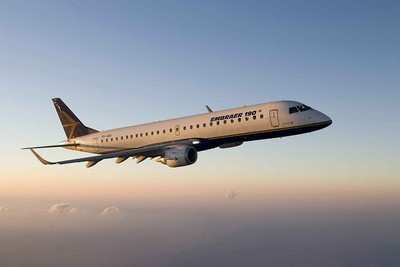Fri, Sep 15, 2017
Transportation Safety Board Of Canada Releases Investigation Final Report
In the release of its investigation report (A16O0066) into a May 2016 in-flight avionics compartment fire, the Transportation Safety Board of Canada found that a fluid contaminant caused the fire that disabled electrical power distribution to several systems of the aircraft.

On 25 May 2016, an Air Canada Embraer ERJ 190-100 was operating as flight ACA361 from Boston/General Edward Lawrence Logan International Airport, Massachusetts, to Toronto/Lester B. Pearson International Airport, Ontario. While en route, warning lights illuminated and associated alarms sounded, alerting the crew that the aircraft was in an electrical emergency condition, and that the main sources of electrical power were offline. The flight crew followed the electrical emergency checklist and after a period of ten minutes, most electrical systems were restored. With main power restored, the aircraft continued to destination and landed uneventfully. No emergency was declared, and no injuries were reported. Air Canada maintenance personnel inspected the aircraft following arrival and noticed extensive fire and smoke damage to the right integrated control center.
The investigation determined that a fluid contaminant had come into contact with the integrated control center and caused arcing, which led to the fire. The fire eventually disabled the main electrical system. As a result of the electrical failure, the smoke detector in the recirculation bay remained unpowered during the period of time when smoke was likely detectable. Due to the lack of smoke or fire warning, the flight crew was unaware of the severity of the situation when it elected to continue to destination. If flight crews are not fully aware of the severity of an emergency situation and exercise their discretion not to land at the nearest suitable airport, then there is an increased risk that a flight may be continued to destination when safer options exist.
Following this occurrence, the manufacturer has proposed changes to its electrical emergency procedure and checklist.
(Source: TSB Canada news release. Image from file. Not incident airplane)
More News
About 2132 And At 11,800 Ft MSL, The Airplane Began A Rapid Right Spiraling Descent On August 18, 2025, about 2133 central daylight time, a Lancair NLA-275-FR-C airplane, N345LA, w>[...]
Aero Linx: The Collings Foundation The Collings Foundation is a non-profit, Educational Foundation (501(c)3), founded in 1979. The purpose of the Foundation is to preserve and exhi>[...]
"This first FAA certification enables us to address the pilot shortage crisis with modern training solutions. Flight schools need alternatives to aging fleets with 40-year-old desi>[...]
North Atlantic High Level Airspace (NAT HLA) That volume of airspace (as defined in ICAO Document 7030) between FL 285 and FL 420 within the Oceanic Control Areas of Bodo Oceanic, >[...]
“HITRON embodies the Coast Guard’s spirit of innovation and adaptability. From its humble beginnings as a prototype program, it has evolved into a vital force in our co>[...]
 NTSB Prelim: Lancair NLA-275-FR-C
NTSB Prelim: Lancair NLA-275-FR-C ANN's Daily Aero-Linx (09.12.25)
ANN's Daily Aero-Linx (09.12.25) Aero-News: Quote of the Day (09.12.25)
Aero-News: Quote of the Day (09.12.25) ANN's Daily Aero-Term (09.12.25): North Atlantic High Level Airspace (NAT HLA)
ANN's Daily Aero-Term (09.12.25): North Atlantic High Level Airspace (NAT HLA) Aero-News: Quote of the Day (09.13.25)
Aero-News: Quote of the Day (09.13.25)



